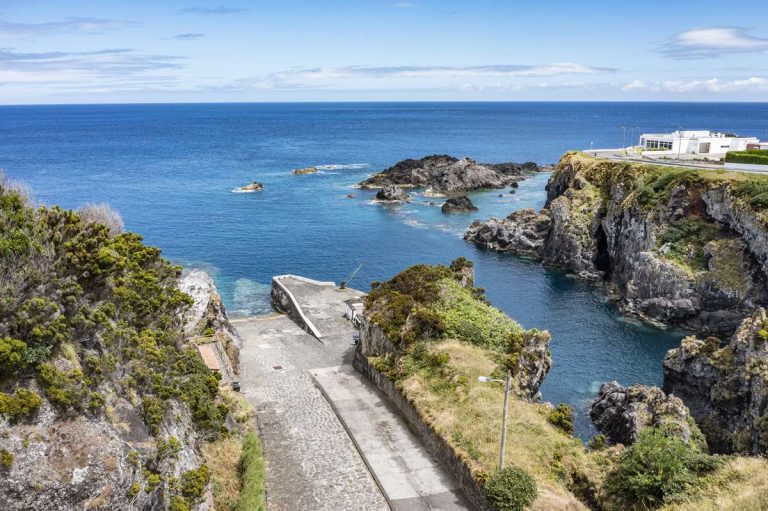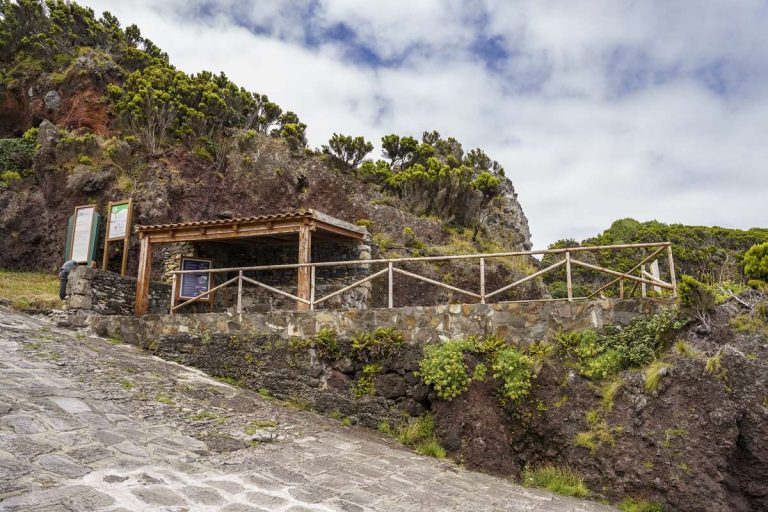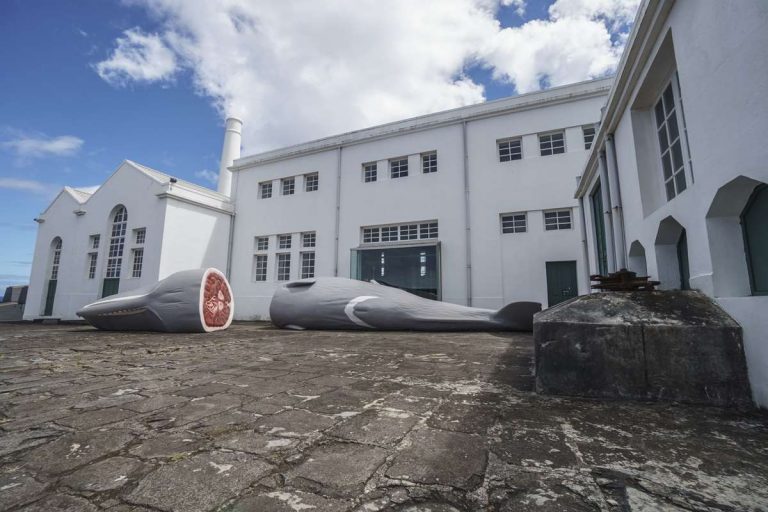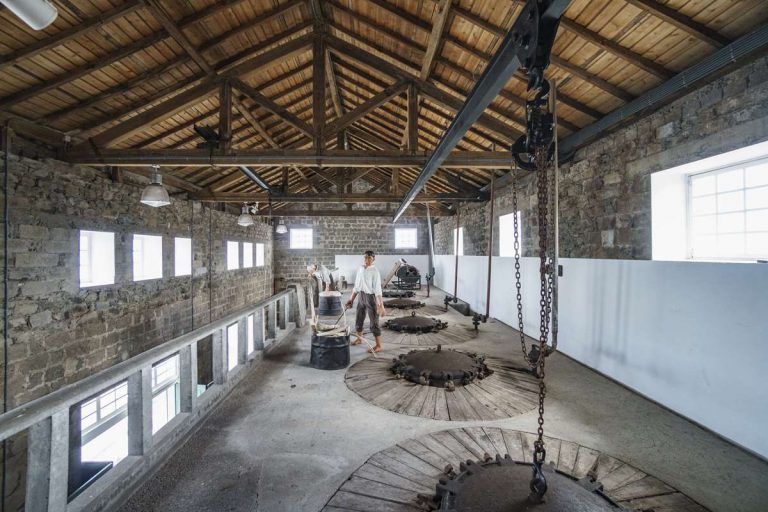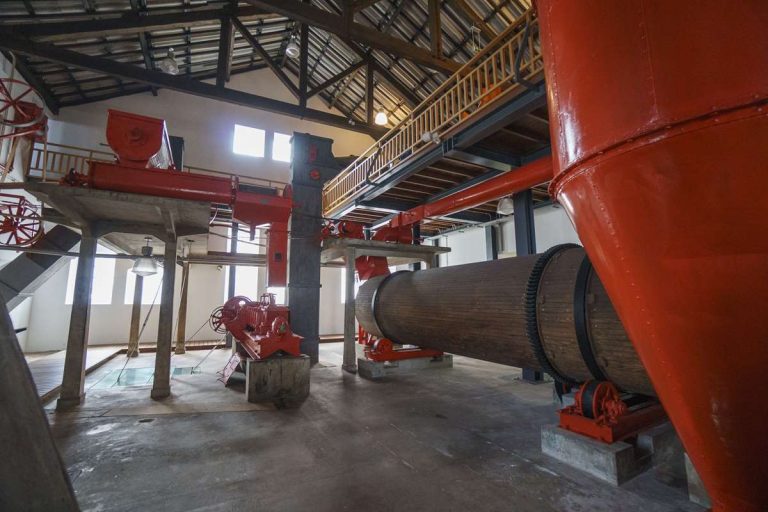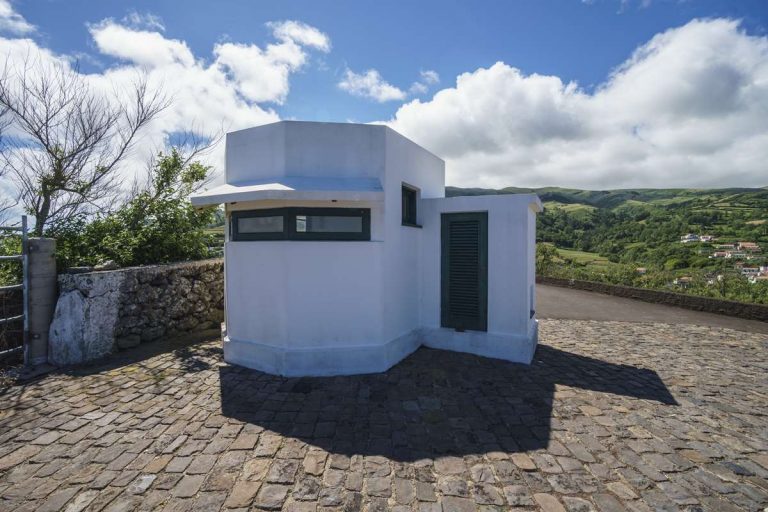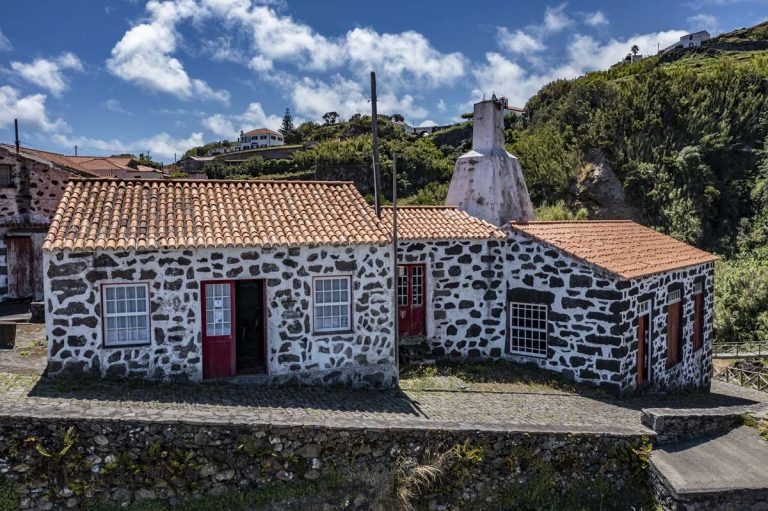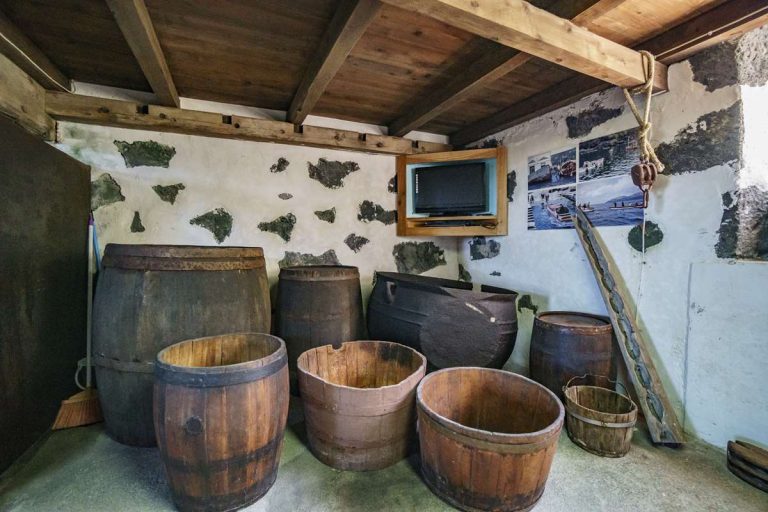The Origins of Whaling
Santa Cruz das Flores and Lajes das FloresWhaling Route
Flores
Santa Cruz das Flores and Lajes das Flores
Duration
Full day (8 hours)
Total distance
21 km
Difficulty
Easy
ITINERARY
RBA01FLODue to its geographical position, the island of Flores was the first one to appear on the horizon for the ships coming from the coast of New England. It served as a base for restocking on supplies, between the end of the 18th century and the beginning of the 19th century. Contact with American vessels and their crews launched coastal whaling in the Azores, starting precisely in Flores, where the first local whaling societies were founded, in the 1950s.
These two areas, with special relevance to understanding the whaling industry on the island of Flores, demand a mandatory visit: Santa Cruz das Flores and Lajes das Flores.
We begin our itinerary with a visit to the Santa Cruz das Flores Whaling Complex, including the entry to the Boqueirão Whaling Factory Museum, a museum space that provides context on the various stages of whaling, and the different stages for processing the whales: from the steam boilers for extracting oil, to the machinery for the production of flour. Built between 1941 and 1944, this factory was later adapted into a museum, in 2015.
We go down to the port, where we find several sections – the anchorage, the pier itself, a stone balcony and one oil deposit, belonging to a set of a total of six deposits, currently missing.
We can also see other distinctive elements of this port: the Hauling Ramp, on which the captured sperm whales were pulled in, by the whaling companies of Flores, and where the whaling boats, sheltered in the boathouse on top of the ramp, were set to sail.
We proceed to the Fazenda das Lajes Lookout, located on the eastern coast of the island, where its watchman provided support to the whalers stationed in Lajes das Flores, keeping them constantly updated on the whales' activity.
Right after lunch, we proceed to Lajes das Flores to visit the Whaling Museum of Lajes das Flores. This small exhibition center houses a set of equipment related to the whaling industry. From 1943 onwards, it was one of the main melting points for whale oil, before the mechanical processes were introduced. Inside, there is a tryout with two flame cauldrons.
We end the day by the Boathouse, built for the maintenance of whaling vessels, in the 50s of the 20th century. With some luck, we can watch one of the rowing training sessions from Clube Naval das Lajes das Flores, which uses the warehouse to store boats that still go out to sea.
CERTIFIED AGENTS
Experience OC
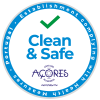

Começamos a nossa jornada na Fábrica da Baleia do Boqueirão, e aproveitamos que estamos neste local tão especial e visitamos a rampa de varar e o depósito de óleo. Este é um sem dúvida um dos locais nos Açores onde conseguimos perceber todo o processo de “desmanche” da baleia. Depois de absorver tanta e tão boa informação, vamos para o terreno e começamos por seguir até a um dos miradouros mais interessantes de Santa Cruz, o do Monte das Cruzes. Daqui podemos vislumbrar a Fábrica de longe e perceber o que os vigias viam dos seus postos de trabalho. Daqui seguimos para a Fazenda das Lajes, para conhecer mais um dos postos de vigia. Antes disso passamos pela freguesia da Lomba, e se a Sra. Rosa tiver a pastelaria aberta, provamos uma queijada de sua autoria, a Florentina. Depois de um almoço em restaurante local (não incluído), seguimos para conhecer Casa das Caldeiros das Lajes, e assim ver o maior caldeirão dos Açores, usado para “derreter” a gordura da baleia. Terminamos o nosso passeio na Casa dos Botes das Lajes e ainda temos oportunidade de visitar a Igreja local e conhecer um pouco da sua historia, também ela ligada ao mar.
Program on schedule: Private
Program Type: Guided
Forma de locomoção: on foot and by car
Duration: 7h00
Starting point: Museu Fábrica da Baleia do Boqueirão
Spoken languages: Portuguese and english
Capacidade mínima: 2
Capacidade máxima: 8
Recommended ages: All ages
Recomendações ao cliente: Roupa e sapatos confortáveis, chapéu de sol, corta vento e garrafa de água.
Serviços incluídos e serviços adicionais: Entradas nos locais, Seguro de Acidentes Pessoais e acompanhamento por guia da Experience OC.
Accessibilities: Não acessível
Antecedência mínima de reserva: 48 horas
Allotments: Disponível todos os dias das 09h30 às 16h30
Payment options: Dinheiro, Cartão de Crédito e MB WAY
Época: All year
Preço (IVA incluído): 60,00€ / pax
Política de desconto: 10% de desconto a partir de 4 participantes
Política de cancelamento: Se os clientes desistirem ao algum dos seus acompanhantes desistirem do programa:
– até 2 dias antes da realização do programa a cobrança será de 100%
– até 6 dias antes da realização do programa a cobrança será de 50%
– até 7 dias antes da realização do programa não existira qualquer penalização


